Fri, May 01, 2009
July 1st Is The Latest Target
The long-awaited, long-suffering, much-delayed Boeing 787
program seems to be heading for the home stretch... at least far as
its first flight is concerned.
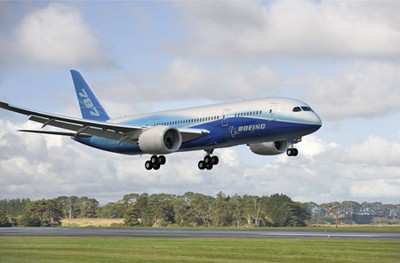
Recent statements by Boeing management confirms that they are
intent on flying by July 1st and that the program seems destined,
finally, to make a target date in can meet. Boeing's Chief Project
Engineer Michael P. Delaney has confirmed that some 60 percent of
the required certification package is now in FAA hands.
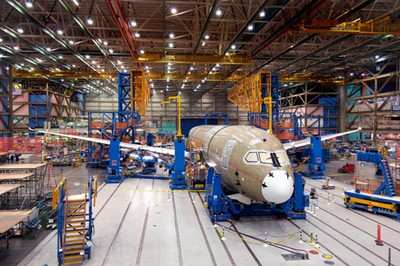
When the 787 taxis out of its home at Paine Field for its first
flight, it will start a test program that is expected to consume
3500 hours, spread over 8 airframes (two of which will never fly).
The first flight will probably require some three hours and will
terminate at Boeing Field... where we understand one hell of a
party is being planned. The actual flight test program is expected
to be completed in less than nine months from first flight.
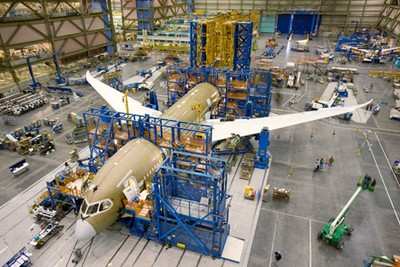
It's been a tough road for Boeing's latest design... the first
to take aggressive advantage of extensive carbon composite
technologies (as much as 50 percent of the primary structure -
including the fuselage and wing - on the 787 is made of composite
materials) and some truly inspired aerodynamic fine-tuning. The
bird was originally expected to fly back in the summer of 2007, but
has been dealing well-documented delays due to the unique demands
associated with new materials and construction/fabrication
techniques as well as a multi-month mechanic strike.
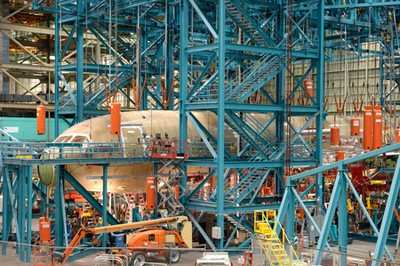
The first version of the 787 Dreamliner, the "Dash-8" will carry
210 - 250 passengers on routes of 7,650 to 8,200 nautical miles,
while the upcoming 787-9 Dreamliner will carry 250 - 290 passengers
on routes of 8,000 to 8,500 nautical miles. A third 787 family
member, the 787-3 Dreamliner, will accommodate 290 - 330 passengers
and be optimized for routes of 2,500 to 3,050 nautical miles.
General Electric and Rolls-Royce have developed engines for the
Dreamliner. Advances in engine technology are expected to
contribute as much as 8 percent of the increased efficiency of the
new airplane.
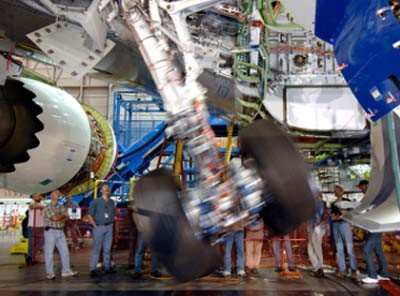
57 customers from six of the world's continents have placed
orders for 886 airplanes -- currently valued at $149 billion.
Should the program finally start performing according to schedule,
airlines could be lining u to take airplanes home by the spring of
2010 - nearly two years its original target.
More News
NASA Takes in Orion, Begins Launch Processing for a Crewed Mission Aerospace giant Lockheed Martin recently turned in its share of the Artemis II venture, delivering its Orion spac>[...]
During The Forced Landing, The Airplane Landed Short Of The Runway And Left Of The Runway Centerline Analysis: The pilot reported that, during the initial climb, the engine lost pa>[...]
From 2010 (YouTube Edition): Company Pioneers Alternatives For Bell 206 TR Blades The approved part replacement business can be a tough one... especially when you're competing with>[...]
Obstacle An existing object, object of natural growth, or terrain at a fixed geographical location or which may be expected at a fixed location within a prescribed area with refere>[...]
“NATA’s 3,700 member companies operate at nearly 4,500 airports in thousands of communities across the nation, providing air transportation services, driving economic g>[...]
 Lockheed Hands Over Completed Artemis II Spacecraft
Lockheed Hands Over Completed Artemis II Spacecraft NTSB Final Report: Pulsar Super Pulsar
NTSB Final Report: Pulsar Super Pulsar Classic Aero-TV: Van Horn Rotor Blades -- Tail Rotor Replacements For Bell's 206
Classic Aero-TV: Van Horn Rotor Blades -- Tail Rotor Replacements For Bell's 206 ANN's Daily Aero-Term (05.02.25): Obstacle
ANN's Daily Aero-Term (05.02.25): Obstacle Aero-News: Quote of the Day (05.02.25)
Aero-News: Quote of the Day (05.02.25)







